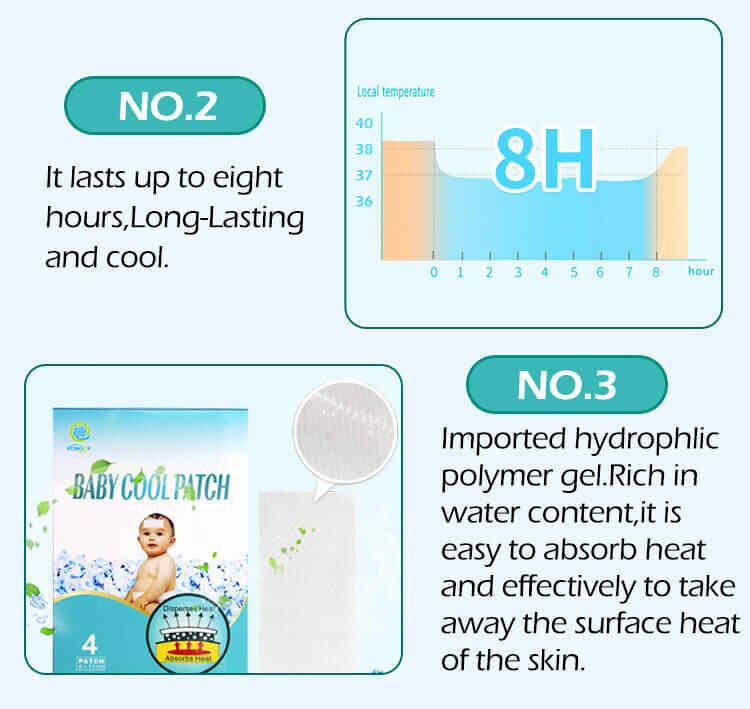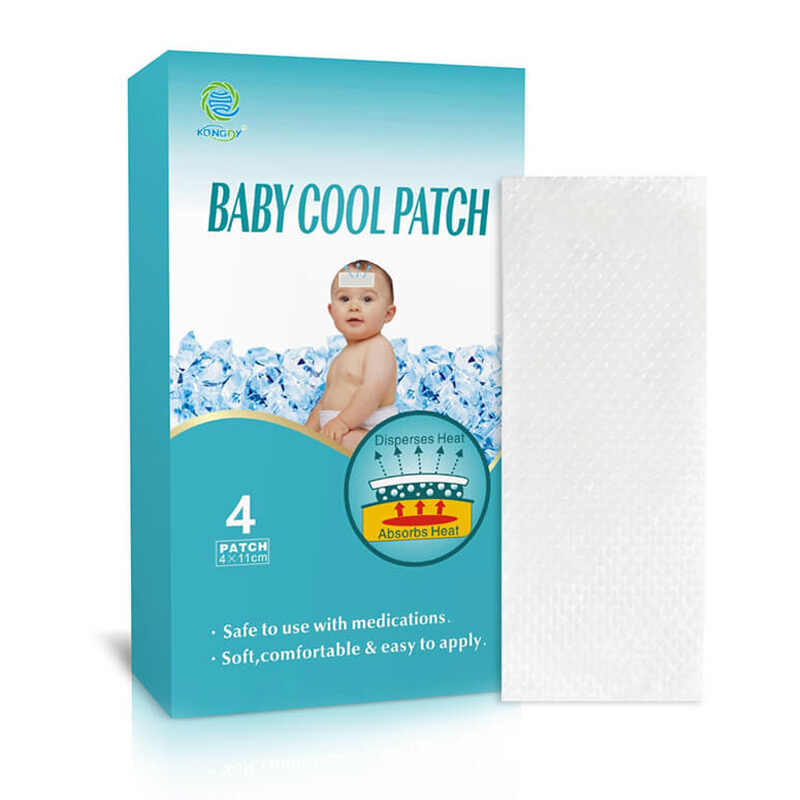Navigating Regulatory Compliance with Fever Cooling Patch OEM Partners
As global demand for non-invasive wellness products grows, fever cooling patches have emerged as a trusted solution for temperature relief. However, entering this competitive and strictly regulated market requires more than just a quality product—it demands compliance with local and international regulatory standards. Whether you're launching a Private Label fever cooling patch or developing a Custom fever cooling patch, aligning with a compliant and knowledgeable fever cooling patch OEM partner is critical to long-term success.
In this article, we’ll explore the importance of regulatory compliance in fever cooling patch production, how to assess a reliable fever cooling patch manufacturer, and why working with a certified fever cooling patch supplier helps minimize risk and accelerate global market entry.

1. Why Regulatory Compliance Matters in the Cooling Patch Market
Regulatory compliance ensures that healthcare and wellness products are safe, effective, and accurately labeled. For fever cooling patches—products typically used by vulnerable populations such as children and the elderly—regulations are particularly stringent. Any failure to meet these requirements can lead to:
Product recalls
Import/export restrictions
Legal liabilities
Loss of consumer trust
Financial penalties
Collaborating with a compliant fever cooling patch OEM reduces these risks and safeguards your brand reputation.
2. Global Regulatory Landscape for Fever Cooling Patches
Depending on your target market, fever cooling patch manufacturers must comply with different sets of laws and standards. Below is a quick overview:
2.1 United States (FDA Compliance)
Fever cooling patches are often classified under medical devices or over-the-counter (OTC) products. Your fever cooling patch OEM partner must ensure:
Registration with the FDA
Compliance with the FDA’s Quality System Regulation (QSR)
Accurate labeling per FDA OTC guidelines
Ingredient safety and documentation
2.2 European Union (CE Marking)
To sell in the EU, your fever cooling patch supplier must meet MDR (Medical Device Regulation) requirements, which include:
Clinical evaluation
CE marking
Technical documentation
Post-market surveillance
2.3 Asia (China, Japan, South Korea)
These markets have strict local regulations. For instance:
China: Requires NMPA registration and Good Manufacturing Practice (GMP) certification.
Japan: Requires PMDA approval for medical products.
South Korea: KFDA classification and product registration are essential.
Choosing an experienced fever cooling patch OEM ensures your product aligns with region-specific standards.
3. Certifications to Look for in a Fever Cooling Patch Manufacturer
A reliable fever cooling patch manufacturer should hold multiple certifications that guarantee product quality, safety, and compliance:
| Certification | What It Ensures |
|---|---|
| GMP (Good Manufacturing Practice) | Manufacturing meets pharmaceutical-grade quality |
| ISO 13485 | Quality management system specific to medical devices |
| CE Mark | Compliance with EU medical device directives |
| FDA Registration | Compliance with U.S. Food and Drug Administration regulations |
| MSDS / COA | Ingredient safety data and batch testing transparency |
These certifications are crucial when selecting a fever cooling patch supplier to ensure your Private Label fever cooling patch or Custom fever cooling patch meets market entry requirements.
4. OEM Partner’s Role in Regulatory Compliance
A knowledgeable fever cooling patch OEM partner will actively support your regulatory journey. Here’s how:
4.1 Documentation Support
From ingredient traceability to batch testing reports and labeling, your OEM partner should provide:
Product technical files
Safety and toxicology reports
Certificates of Analysis (COA)
Ingredient lists and Material Safety Data Sheets (MSDS)
Shelf-life validation reports
This documentation is essential when submitting your product for regulatory review in most jurisdictions.
4.2 Compliance-Centered R&D
For Custom fever cooling patches, the OEM’s R&D team should ensure the product:
Uses compliant materials and actives
Meets regulatory stability requirements
Aligns with claims supported by data (e.g., “lasts up to 8 hours”)
4.3 Labeling & Packaging Compliance
A Private Label fever cooling patch must feature accurate, compliant labeling. Your OEM partner should help with:
Multilingual labeling based on destination country
Allergen information
Usage and storage instructions
QR codes or digital verifications, if applicable
5. Steps to Ensure a Compliant Partnership with an OEM
To navigate regulatory compliance smoothly, follow these practical steps when choosing a fever cooling patch OEM:
Step 1: Verify Certifications
Ask for digital copies of GMP, ISO 13485, CE, or FDA certifications. Confirm that they’re issued by recognized bodies.
Step 2: Conduct a Factory Audit (Virtual or In-Person)
Evaluate the OEM's:
Cleanroom standards
Quality assurance protocols
Equipment sterilization process
Documentation practices
Step 3: Request Regulatory Experience Proof
Inquire about:
Previous clients who have successfully entered your target market
Case studies or export history
Regulatory support services (especially for Private Label fever cooling patch solutions)
Step 4: Confirm Ingredient Compliance
Ensure all ingredients used in your Custom fever cooling patch are permitted in your target regions and supported by safety documentation.
6. Challenges in Regulatory Compliance (And How to Overcome Them)
6.1 Challenge: Evolving Regulations
Solution: Partner with a fever cooling patch supplier that continuously monitors and adapts to changes in global regulations.
6.2 Challenge: Documentation Gaps
Solution: Choose a fever cooling patch OEM that provides complete and structured technical files for all products.
6.3 Challenge: Market-Specific Labeling
Solution: Work with a supplier experienced in multi-market exports, who can guide you through country-specific labeling requirements.
7. Real-World Example: Compliance Success Story
A U.S.-based health brand collaborated with a GMP-certified fever cooling patch OEM in Asia. With the OEM’s support, they:
Developed a Custom fever cooling patch with herbal ingredients
Passed CE certification and FDA registration within six months
Launched successfully in North America and Europe
This would not have been possible without the OEM’s regulatory insights and full documentation package.
8. How Compliance Enhances Brand Trust and Market Access
Brands that prioritize compliance gain more than just legal approval. They earn:
Consumer trust: Shoppers prefer products with visible certifications (e.g., FDA, CE).
Retail partnerships: Major retailers demand third-party certification.
Faster market access: Reduced delays at customs and regulatory checkpoints.
Brand credibility: Certifications and safety claims reinforce your value proposition.
By aligning with a compliant fever cooling patch manufacturer, your brand becomes a recognized player in both domestic and international markets.
Final Thoughts
Navigating the maze of regulatory compliance may seem complex, but it's essential for any brand planning to scale in the healthcare or wellness sectors. A certified, experienced fever cooling patch OEM is more than just a manufacturer—they’re a strategic partner who helps ensure your product meets legal standards, earns consumer trust, and enters markets confidently.
Whether you’re launching a Private Label fever cooling patch, creating a Custom fever cooling patch, or sourcing from a global fever cooling patch supplier, compliance should be central to your strategy. Choose wisely, and let regulatory excellence become a pillar of your brand success.
Related Questions & Short Answers
Q1: What certifications should a fever cooling patch OEM have?
A: Look for GMP, ISO 13485, FDA registration, and CE marking depending on your target market.
Q2: How do I know if my fever cooling patch supplier is compliant?
A: Ask for up-to-date certificates, conduct an audit, and verify documentation capabilities.
Q3: Can I sell Private Label fever cooling patches in the EU or USA?
A: Yes, but only if your fever cooling patch manufacturer meets local regulations (CE/FDA) and provides appropriate documentation.
Q4: What documents are required for regulatory compliance?
A: COA, MSDS, technical files, ingredient lists, labeling proofs, and possibly clinical evaluations.
Q5: Are Custom fever cooling patches harder to approve?
A: They can require more testing and documentation, but an experienced fever cooling patch OEM will help streamline the process.
Q6: Is regulatory compliance necessary for online sales?
A: Yes, especially on platforms like Amazon or international e-commerce sites. Compliance improves visibility and reduces the risk of takedown.
Q7: Do fever cooling patches need FDA approval?
A: If classified as OTC medical devices or treatments in the U.S., they require FDA registration and compliance.






